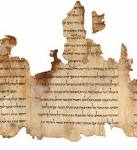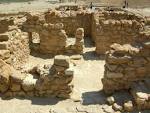|
||||||||
|
|
|
2014-09-05 ArtNo.45325
◆Review:Jesus and Gnosticism--The Origin of Zen Buddhism (1)
 With the east expedition of Alexander the Great, Greek philosophy fused together with religions and cultures of Judea, Egypt, Persia, India and so on and then the tide of Gnosticism occurred. In a broader sense, the Mahayana Buddhism movement might have been a part of it. Diaspora of Jews and Persians around the world played a major role in the tide of Gnosticism. And Bodhi Dharma and Kumarajiva might have been two of them. ○Q Sayings and Gnosticism It seems that none of writers of the Gospels except John heard for themselves the teachings of Jesus. The four Gospels of the New Testament, especially the Gospels of Matthew, Mark and Luke, which are called synoptic gospels, are similar in the story they tell about Jesus. Therefore a hypothesis has been made, there was a written collection of sayings of Jesus called "Q source" or "Q Sayings Gospel" which was commonly referenced by these writers. The Q Sayings Gospel, which has been recently reproduced from the Dead Sea Scrolls, the Nag Hammadi documents and so on, seems to be in line with the doctrine of Gnostics. However, the writers of the Gospels of Matthew, Mark and Luke do not seem to have understood the doctrine of Gnostics. With the east expedition of Alexander the Great, Greek philosophy fused together with religions and cultures of Judea, Egypt, Persia, India and so on and then the tide of Gnosticism occurred. In a broader sense, the Mahayana Buddhism movement might have been a part of it. Diaspora of Jews and Persians around the world played a major role in the tide of Gnosticism. And Bodhi Dharma and Kumarajiva might have been two of them. ○Background of the Twelve Apostles According to Professor James D. Tabor, Chair of the Department of Religious Studies at the University of North Carolina, each time the Twelve Apostles are listed, in the Gospel of Matthew, Mark, and Luke, they are consistently grouped into three tiers of four names each: 1. Simon Peter, Andrew, James the Greater, and John 2. Philip, Nathanael (Bartholomew), Matthew, and Thomas 3. James the Less, Thaddaeus (Judas), Simon the Zealot, and Judas Iscariot. ○2 groups who call themselves "Children of the Light" While John, who is said to be the writer of the Gospel of John, like his elder brother James the Greater, Peter and Andre, seems to have been a disciple of John the Baptist originally (John 1:35-42), Philip, Nathanael, Thomas seem to have belonged to another group referred to as "Children of the Light" (Thomas 50, John 1:43-51, Acts 8:5-13) and Jesus might have led this Gnostic group. When Jesus spoke of the baptism of the Spirit to Nicodemus, he said, "We speak of what we know, and we testify to what we have seen, but still you people do not accept our testimony. (John 3:11)" Jesus used the plural form of the first person "we" and suggested that there was a group, which might be called "Children of the Light" and was testifying concerning the baptism of the Spirit. The members of a group which is said to have had close relationship with John the Baptist and was based at Qumran, near the shore of the Dead Sea, also called themselves "Children of the Light". However they were fundamentalists who were strictly in compliance with the law of Judaism. In contrast, the doctrine of the Gnostic is characterized by denial of the God of the Old Testament. It may be mentioned here that Judas Iscariot, too, who is said to have betrayed Jesus, might have been a member of the Gnostic group called "Children of the Light". ○3 close aides of Jesus Although Gnosticism was ideological foundation of Jesus, he liked to take with him three people who had been disciples of John the Baptist at first, Peter, James and John, the brother of James, as his close associates. (Matt 17:1,26:37) It is believed that they played the major role to define John the Baptist as a herald for the advent of Jesus and to tie the followers of Jesus and the Essenes group after the death of John the Baptist. According to the Gospel of John, John the Baptist confessed "I am not the Christ" to envoys who had been sent by the Jews of Jerusalem and to his disciples, two times. (John 1:20,3:28) From this, it is known that John had been seen as the Messiah. Thus the Essenes are believed to have been looking for another Messiah after the death of John the Baptist. ○Brothers of the Lord Jesus' younger brother James, who is said to have been a priest of the Nazarite, another fundamentalist sect, and to have entered into the holy areas of the Temple where only priests could go and to have functioned as "high priest" to his followers, seems to have had won the high honor of the Righteous and to have held great prestige and certain dominance among the clergy in Jerusalem before Jesus embarked on missionary work. It might have substantiated James' dominance that he asked Paul, who has been known to curse Primate Apostle Peter in his presence, to take the Nazarite Vow, which was contrary to Paul's beliefs, and actually made him carry it out. (Acts 21:23-27) According to Epiphanius, a 4th-century Christian writer, James exercised the priesthood on behalf of the Nazarite community, entering into the holy areas of the Temple where only priests could go and functioned as "high priest" to his followers. In other words, James the Righteous seems to have been certified as the legitimate lineage of the High Priest representing both the Davidic royal family as well as a priestly Aaronic Lineage. If James the Less did not exist, not only the Primitive Church would not survive but also Jesus would not have been crucified, as it means that the clergy in Jerusalem led by the High Priest Caiaphas must have singled out the brother of James who held great prestige in Jerusalem and have entrusted him the role to be crucified as a lamb of God. According to Mr. Tabor, the three people in the rest of the twelve apostles, except Judas Iscariot who was fastened a stigma as traitor, Matthew the tax collector, Simon the Zealot and Thaddaeus (Judas) are also clearly younger brothers of Jesus. Therefore these three people are understood to have been strongly influenced by James the Less. [Reference]
   Please check the contents that have been updated in this article on"The Origin of Christianity", an e-book, which is being updated from time to time. Free download of "The Origin of Christianity"Your CommentsSEAnewsFacebookSEAnewsGoogle |
|
[Your Comments / Unsubscribe]/[您的意见/退订]/[ご意見/配信停止]
Please do not directly reply to the e-mail address which is used for delivering the newsletter. 请别用递送新闻的邮件地址而直接回信。 メールをお届けした送信専用アドレスには返信しないで下さい。 |